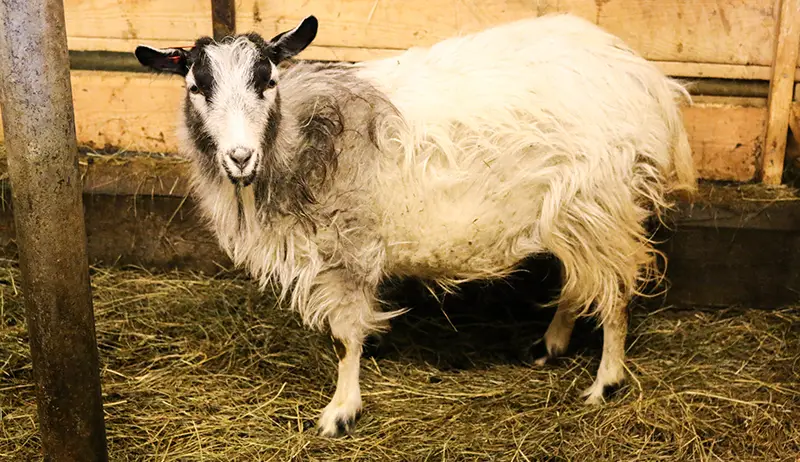
In this complete guide to goat parasites we answer the most common parasites, including symptoms, treatments, and more.
Table of contents
- What Are Goat Parasite?
- What Are the Common Causes of Parasites in Goat?
- What Are the Main Types of Goat Parasites?
- What Are the Symptoms of Parasites in Goats?
- Goat Parasites Life Cycle – What It Is?
- Goat Parasites – Major Treatments
- Goat Parasite Identification Chart
- Preventing Parasites in Goat
- Texas A&M University Veterinarian Video
What Are Goat Parasite?
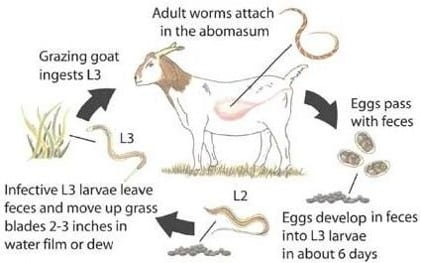
A creature that lives in or on the host and gets the food from the host or lives at the expense of the host to survive is known as parasites.
What Are the Common Causes of Parasites in Goat?

The common causes of parasites in goats are poor nutrition, imbalanced diet, poor management, dirty and unhygienic environment, overcrowding of goats, the optimal temperature for the pests, and less immunity against the parasites.
What Are the Main Types of Goat Parasites?

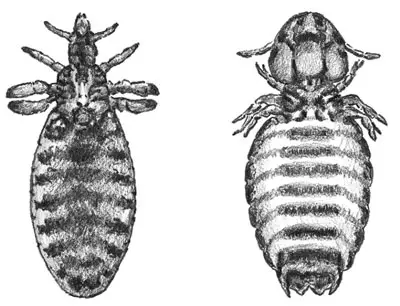
The goat parasites are divided into two major categories, i.e. External parasites and Internal Parasites.
External Parasites |
|---|
| External parasites are the arthropods that live on the body of the goats. These external parasites are also known as ectoparasites. These external parasites feed on different body tissues like skin, hair, and blood. These parasites develop irritation and discomfort for the goats. External parasites can cause mange in goats.
These parasites are capable of transmitting the disease from affect goats to the healthy goat. These parasites affect the goats by reducing their weight gain, reduction in milk production, and causing anaemia in the goats. Common examples of external parasites include lice, mites, fleas, and ked. |
Internal Parasites |
|---|
| Internal parasites also known as endoparasites, are the parasites that live within the body of the goats. These parasites have a specific organ to live on and get the feed from the organ. These parasites suck the blood of the goat to survive within the goats and causing anaemic goats. These parasites are fatal and even cause death within the goats. Some common examples of internal parasites include lungworms, coccidia (which cause coccidiosis), liver flukes, stomach worm, etc. |
What Are the Symptoms of Parasites in Goats?
The signs of parasites depend on the cause of the disease. However, the common symptoms of parasites include:
- Weight loss as the goats will not get the proper nutrition they required.
- Onset of diarrhea
- The goat’s hair coat will become rough as insufficient nutrient will lead to loses of the hair in lustre.
- The goat will become depressed, and the goats will keep their ears and head down. The goats will not show any interest in standing for a longer time
- The goats will become weak and are easier to catch.
- The parasites will cause anaemia in goats, and the gums, eyes, the perineum will become whitish due to excessive blood loss.
- The goat may suffer from high temperature, and their extremities like legs and ears will become cold.
- The goat may have fast breathing or painful breathing as the goats will try to take oxygen into the lungs.
- There will be the development of cough within the goats affected by the parasites.
- Swelling under the jaw is one of the most prominent signs of parasites that happen due to the accumulation of the fluid. This accumulation of fluid can sometimes occur under the stomach of the goats.
Goat Parasites Life Cycle – What It Is?
The goat parasites are divided into two major categories, i.e. External parasites and Internal Parasites.
Life Cycle of the External Parasites |
|---|
|
The general life cycle of external parasites involves the structural changes that start with the eggs lay from the hatching from larvae. The larvae will grow and shed their skins many times, and each time they will increase in size. Larvae depend on the host for obtaining the food. From larvae a hard structure develops known as pupa, which can survive the harsh winter season too. This pupa will develop into the adult parasite. |
Life Cycle of Internal Parasites |
|---|
|
The lifecycle of each parasite is specific. However, the goats will get the parasite in the infectious immature form via contaminated pasture. This immature form of the pests develops into an adult within the goat. The adult will then lay eggs that shed onto the field via the faeces of the goat. The length of the life cycle is inconsistent between 16-21 days and this variable duration is due to the moisture and temperature of the environment. |
Goat Parasites – Major Treatments
There are a few drugs to treat parasite in goats. All the medicines used to treat parasites in goats need to have a specific withdrawal period for milk and meat. It is very crucial to note that all the de-wormers are not effective against all the parasites. This decrease in the effectiveness of de-wormer is usually to the development of resistance within the worms due to regular usage of a specific dewormer for a more extended period.
Therefore, a right dewormer against the parasite can only help to remove the pests from the goats. Treatment of parasites depends on the burden of the parasites. In the heavy burden of parasites, killing all the parasites simultaneously will generate more problems for the hosts, i.e. for the goats, such as plugging of the gastrointestinal tract with the dead worms.
Hence, in the massive infestation of the worms, initiate the treatment with a lower dose of the dewormer but at a frequent interval. Some anti-parasitic medicines can be administered orally, some injecting under the skin. Usually, injectable dewormers take more time to show their effectiveness as compared to the medication given oral. The oral medicines last longer as compared to injectable drugs.
The affected goats should be in isolation and remain separate from the healthy goats during the time of treatment. After treating the affected goats, wait for three to four weeks and retest the affected goats again. Retreat the animals with a heavy infestation of parasites and then recheck them.
Even if the parasite burden doesn’t reduce, then it is better to cull the goat to minimise the chances of parasite transmission. Remove the risk factors that contribute to re-infestation of the parasites and the animals that are resistant to the infestation.
Goat Parasite Identification Chart
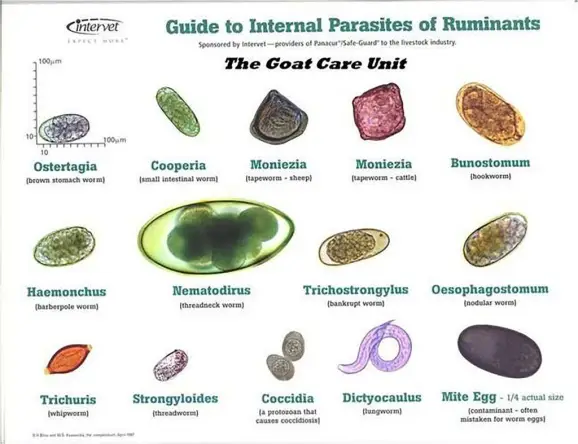
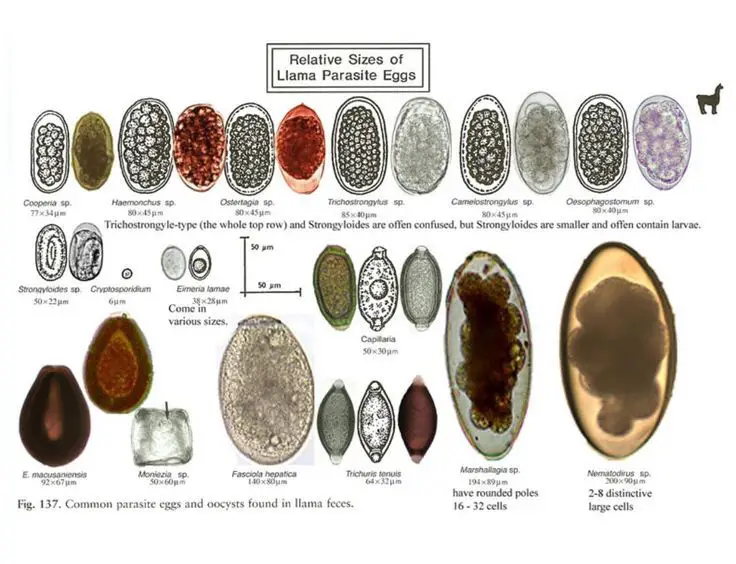
Preventing Parasites in Goat
The best prevention from the parasites in goats is decreasing the exposure of the goats to the parasites by providing the goats with a clean and hygienic environment from the beginning. Avoiding overcrowding of the goats within the herd and placing the goats according to the area will help to reduce the chances of parasites.
A proper and well-balanced diet is very crucial to keep the goat healthy and help the goats to develop immunity against the effects of the parasites. Other factors that will help to prevent the occurrence of the pests include:
- Stop pasturing the goats in the damp areas.
- Avoid pasturing early morning or evening when the dew is present on the pasture.
- Rotation of pastures will help to avoid a high load of parasites
- Selection of the goats with low load or worms
Texas A&M University Veterinarian Video
Dr. Reid Redden of Texas A&M University discusses goat internal parasites:
References:
- Internal Parasites of Goats – Shepton Vets
- ENY-273/IG129: External Parasites of Sheep and Goats – EDIS
- Internal Parasites in Sheep and Goats – Small Farms Program
- Goat External Parasites (Arthropods) – Goats
- Identification of Internal Parasites of Sheep and Goats
- Gastrointestinal Parasites in Sheep and Goats: Frequently Asked Questions




